Year 5 Geometry Worksheets
Comparing angles with 90 degrees, 45 degrees and 135 degrees
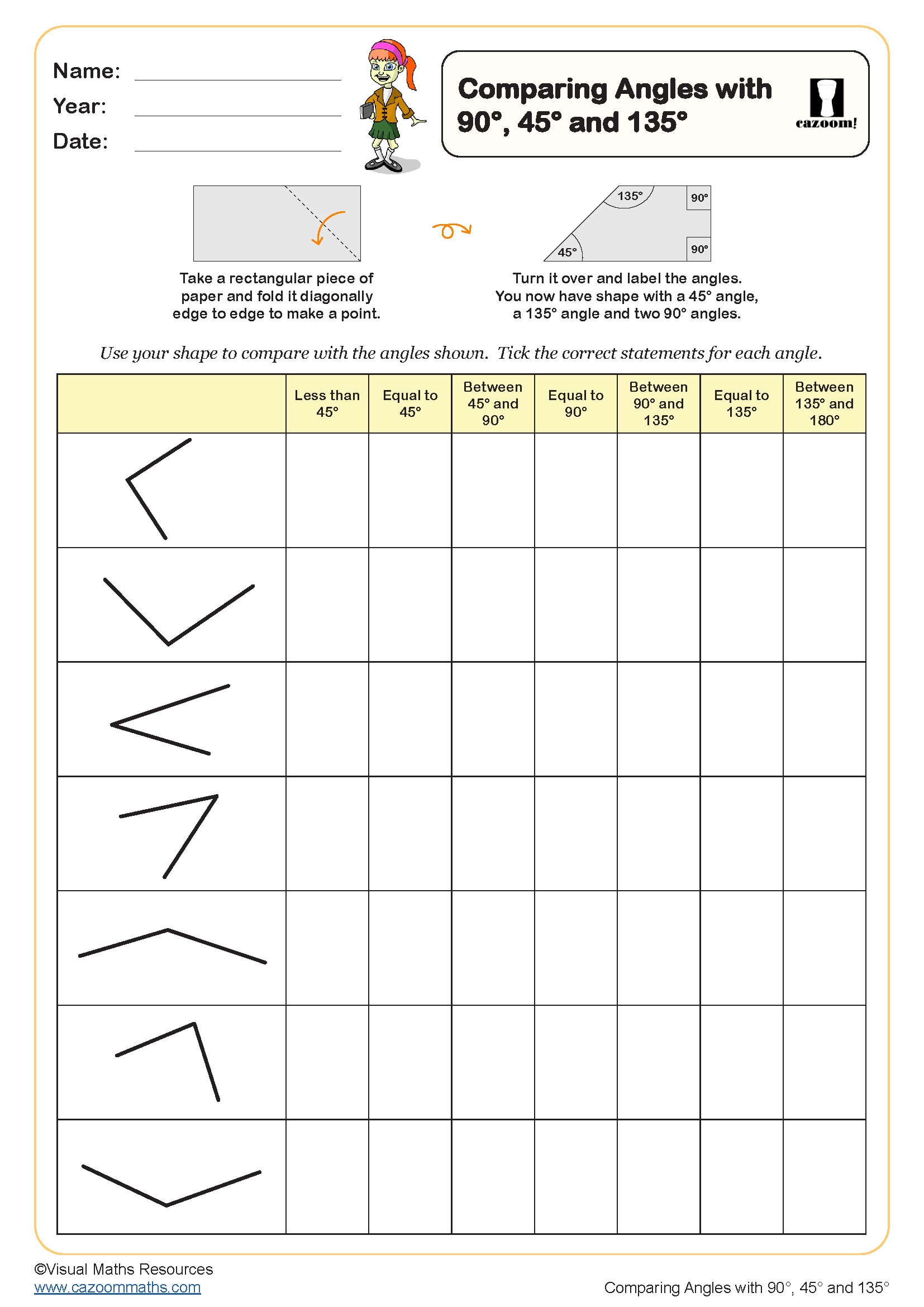
Drawing and Measuring Angles
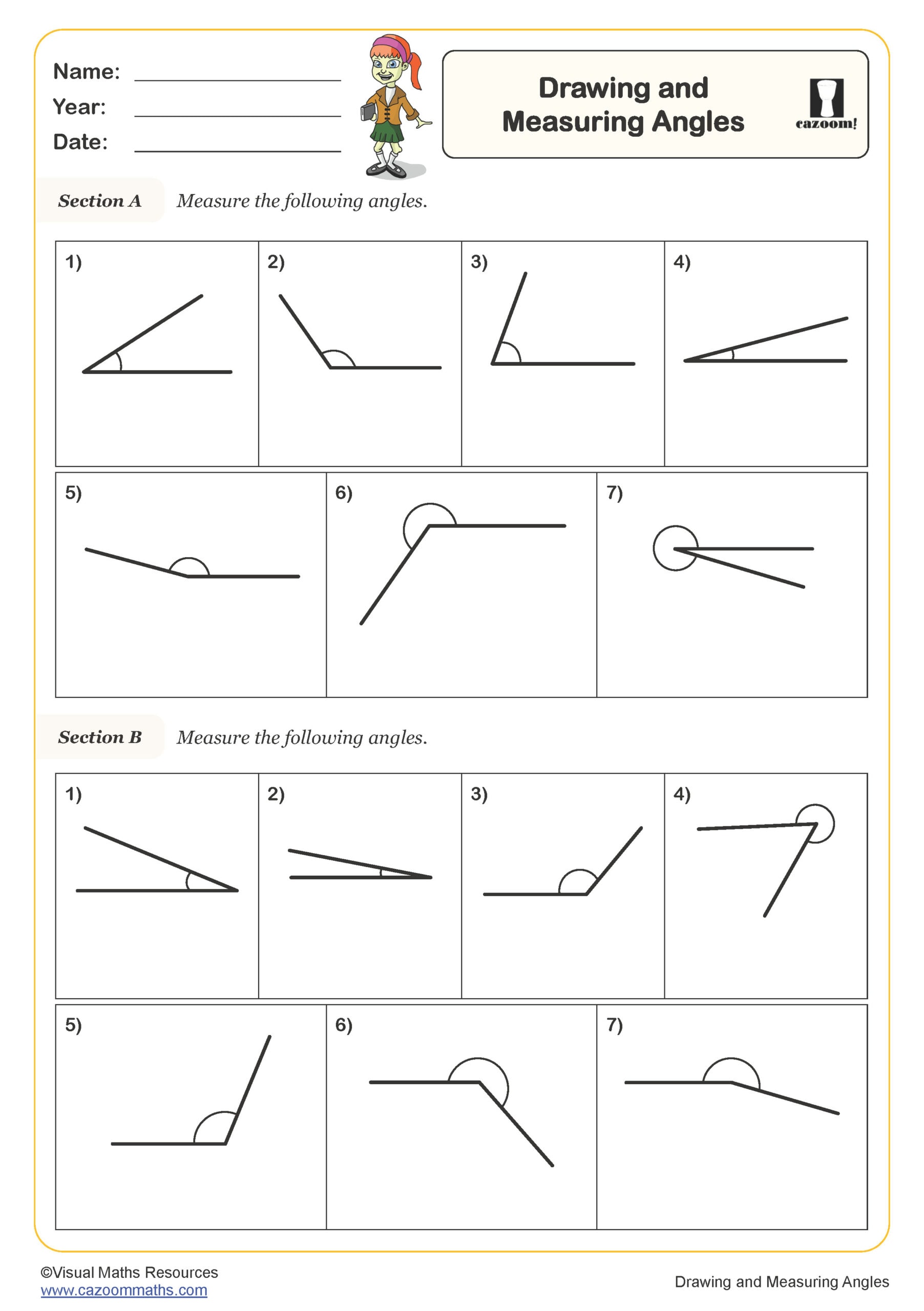
Estimating Angles
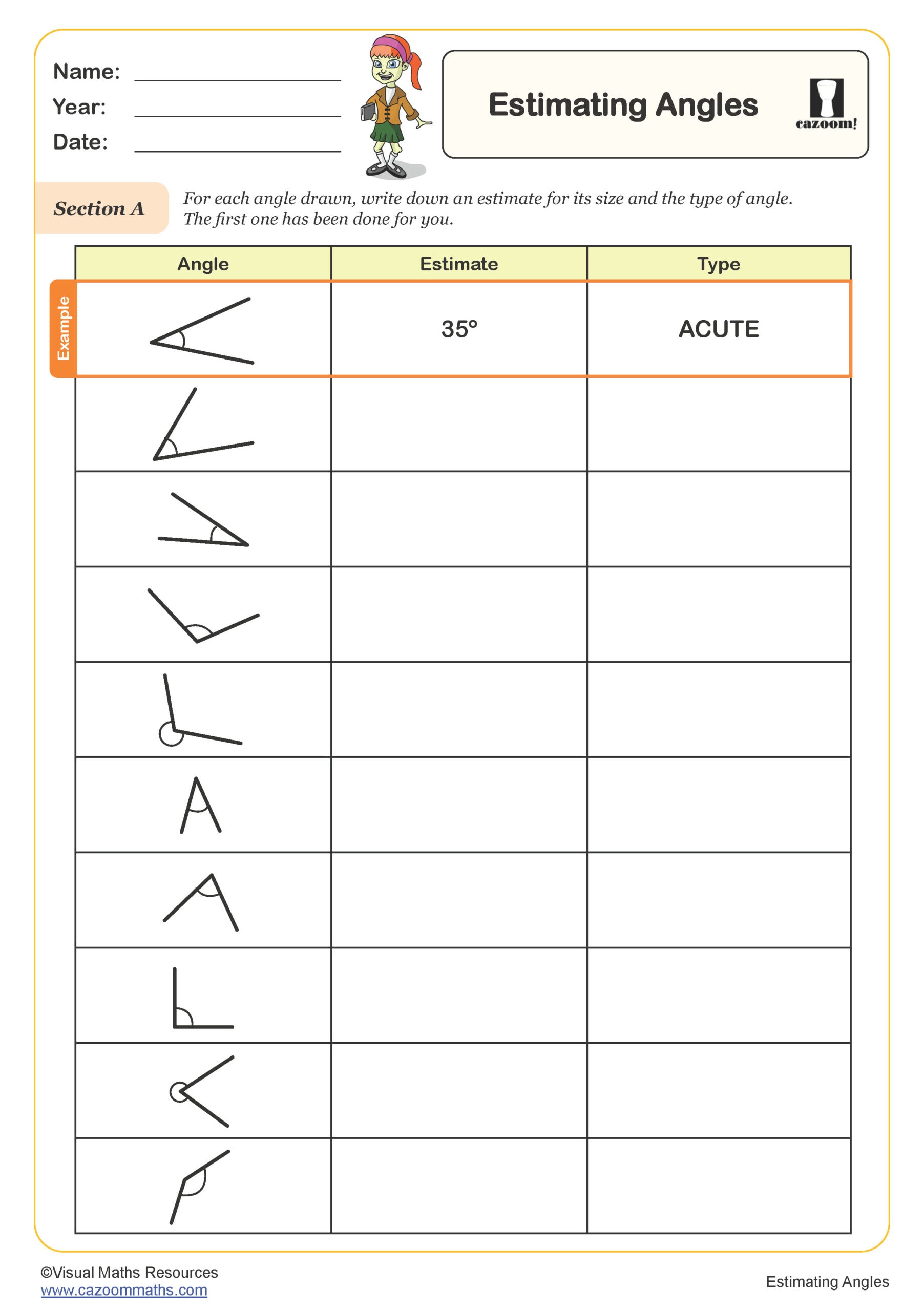
Refelction in Horizontal and Vertical Mirror Lines
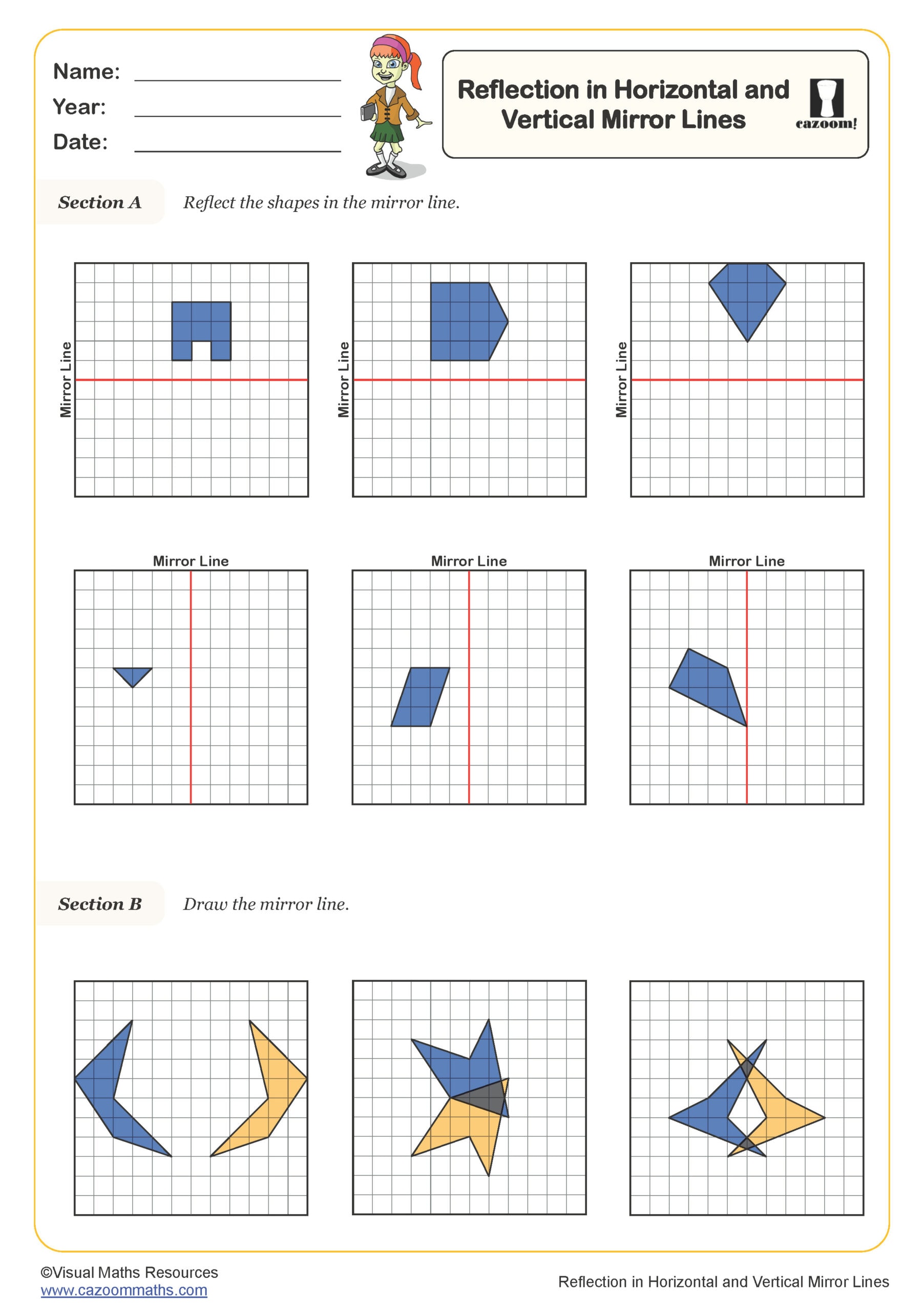
Reflection in Horizontal, Vertical and Diagonal Mirror Lines
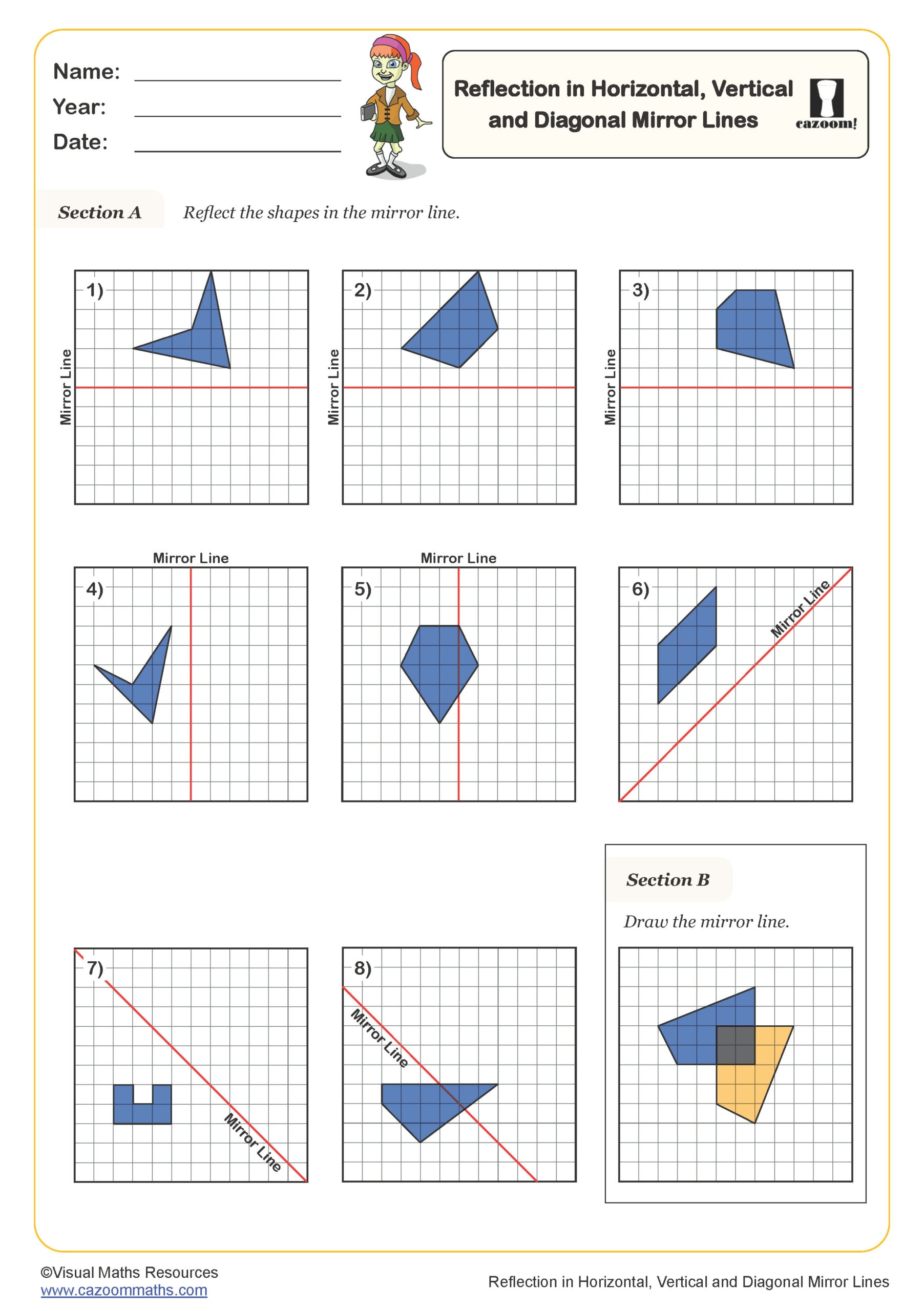
Reflections in the 1st Quadrant (A)
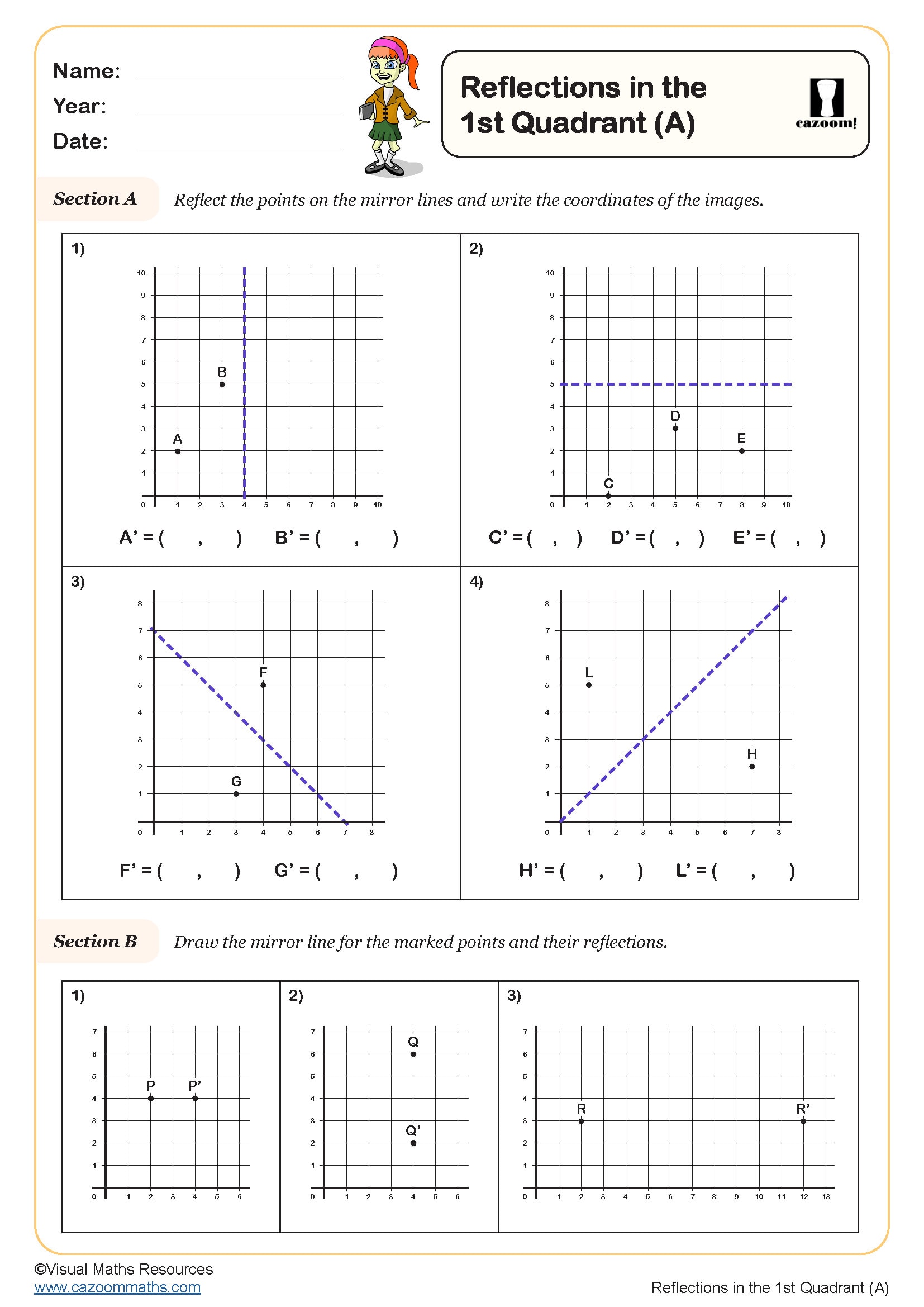
Reflections in the 1st Quadrant (B)
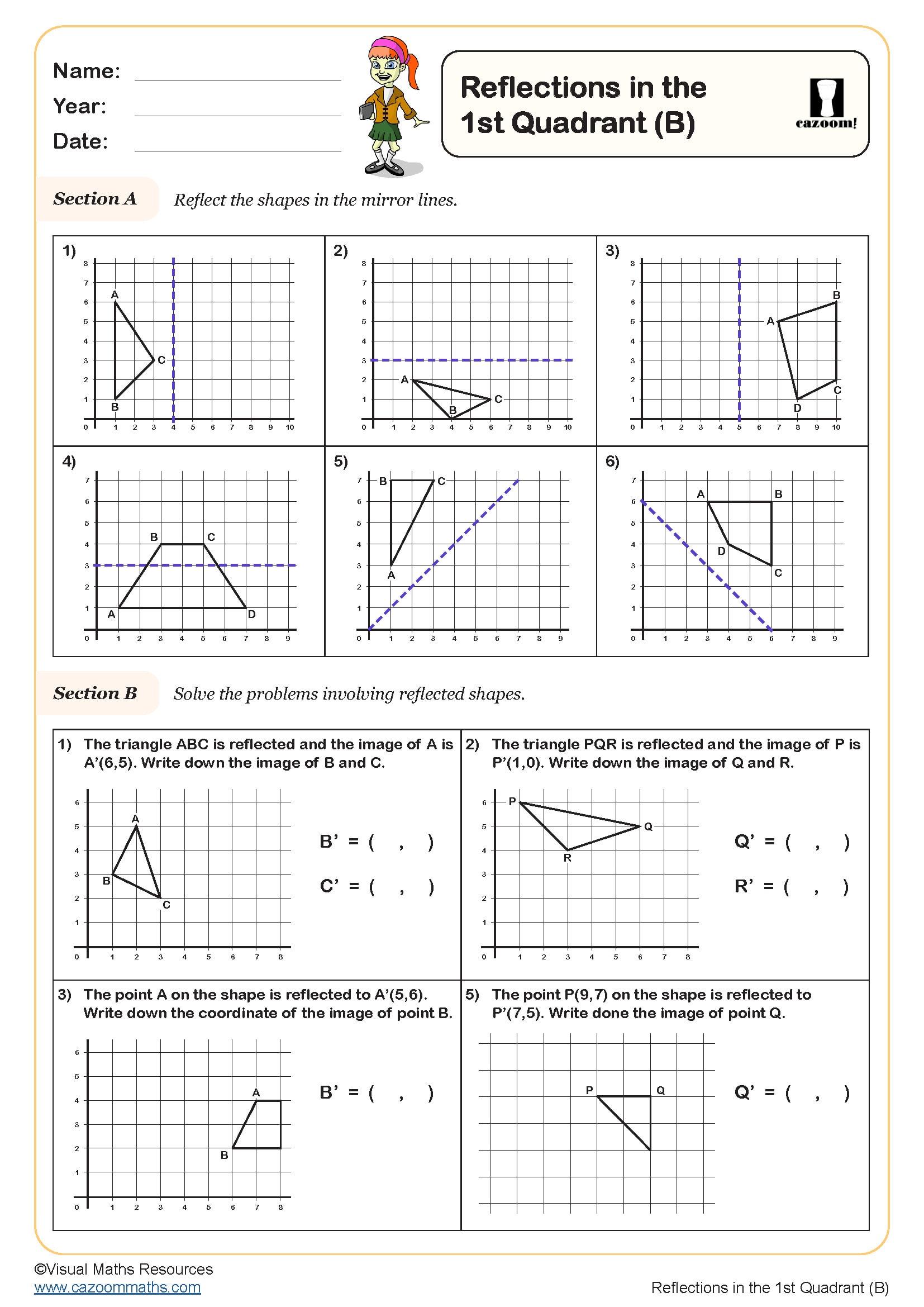
Translations - from Words
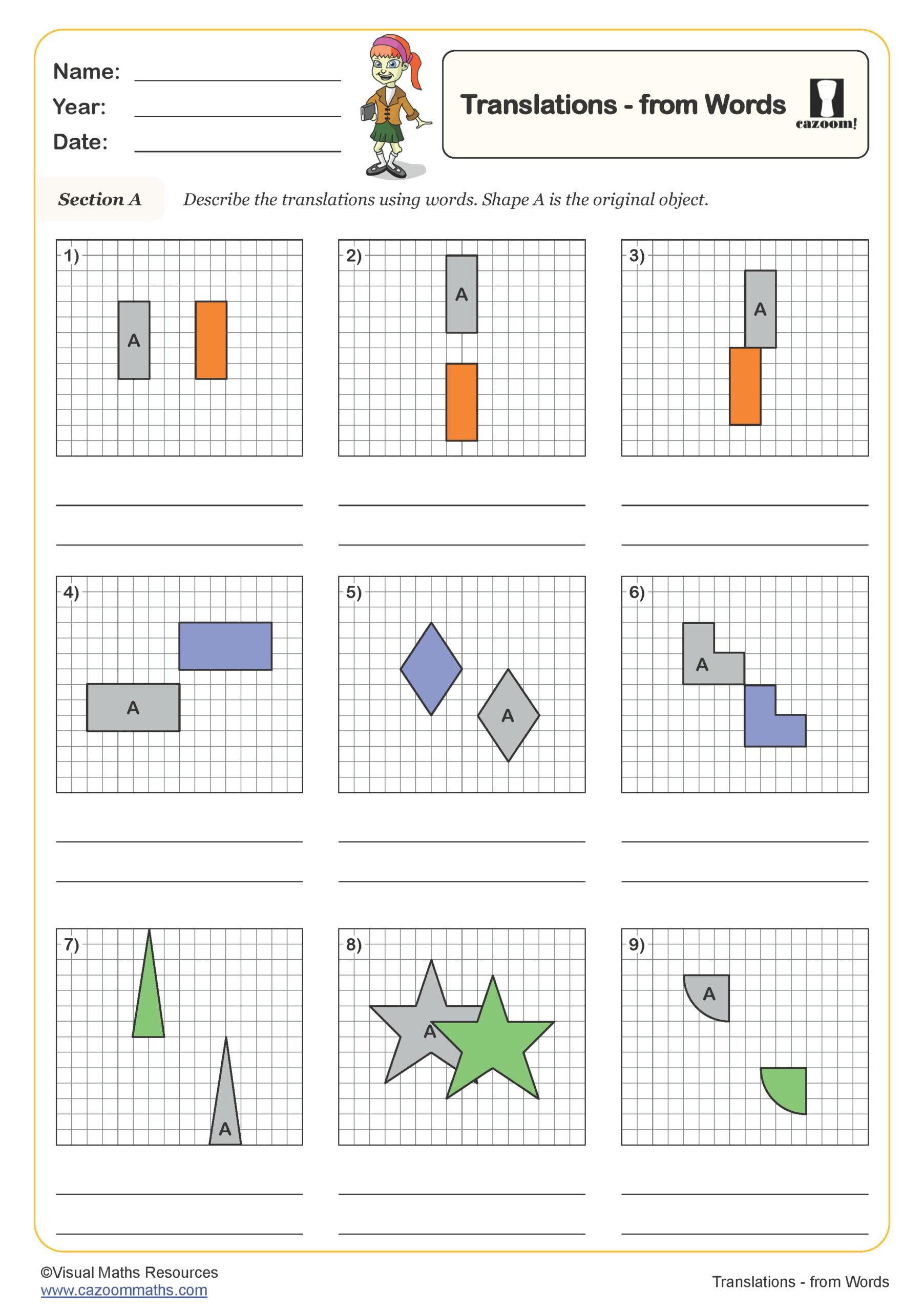
Translations and Reflections in the 1st Quadrant
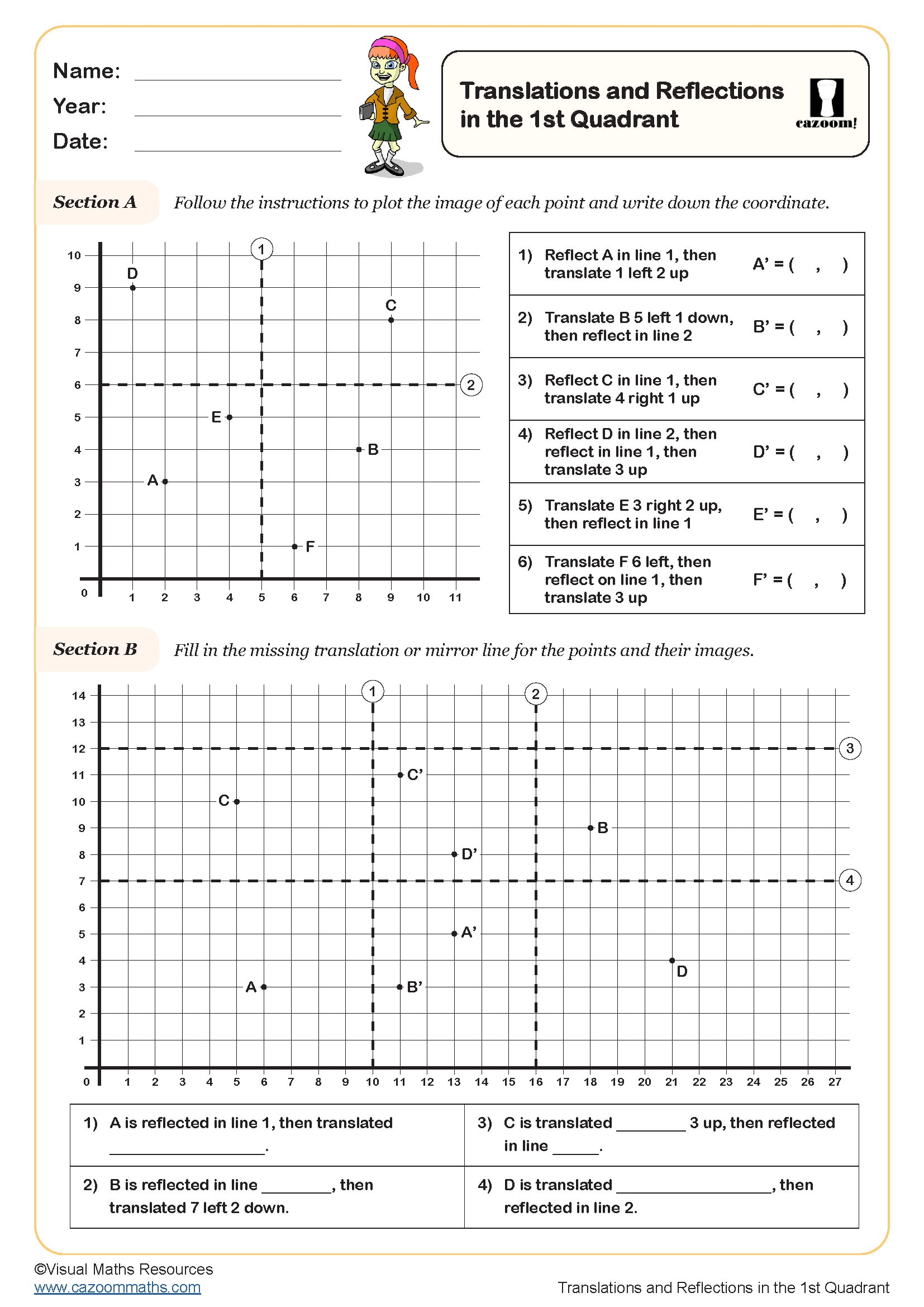
Translations in the 1st Quadrant (A)
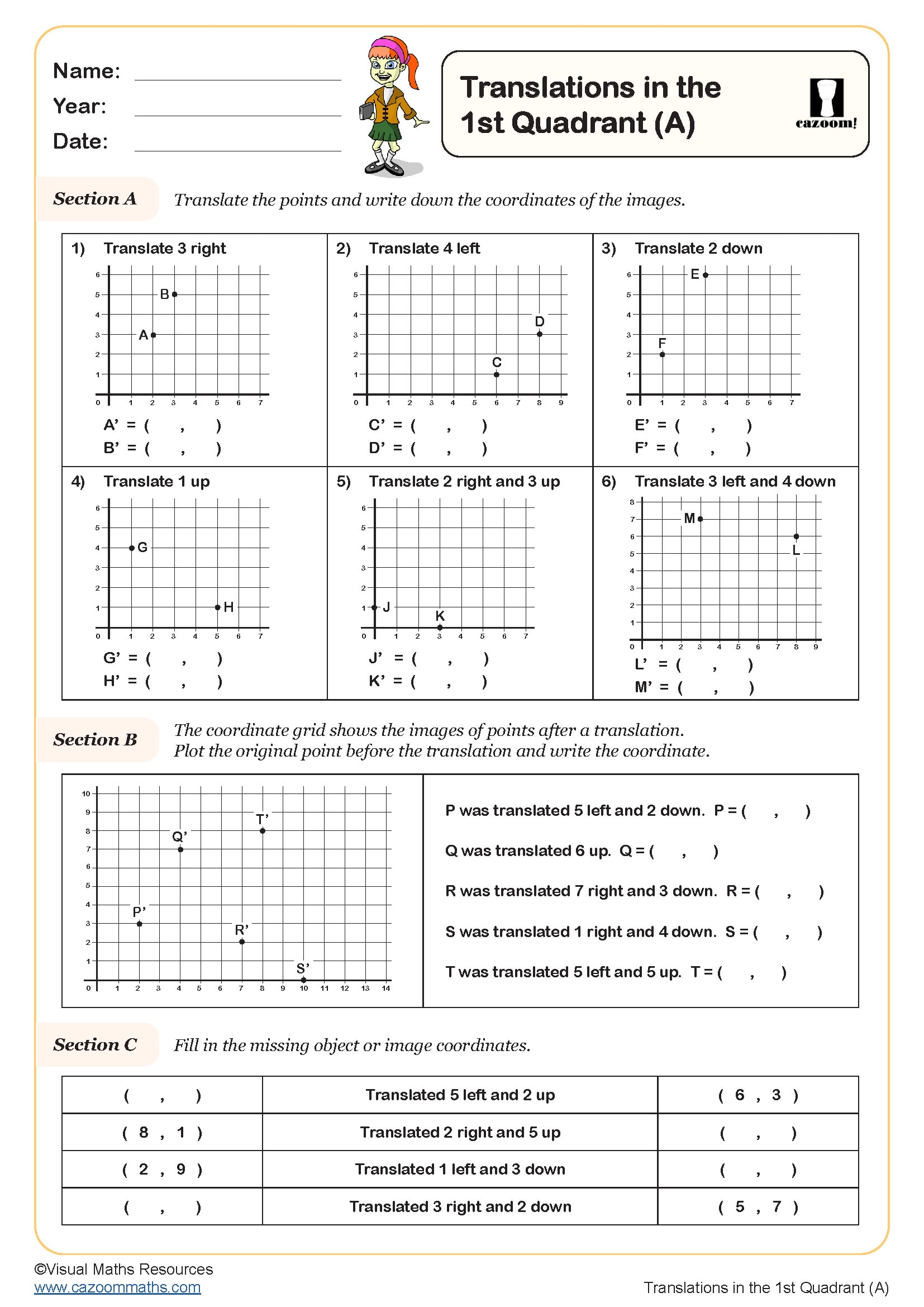
Turning Angles (A)
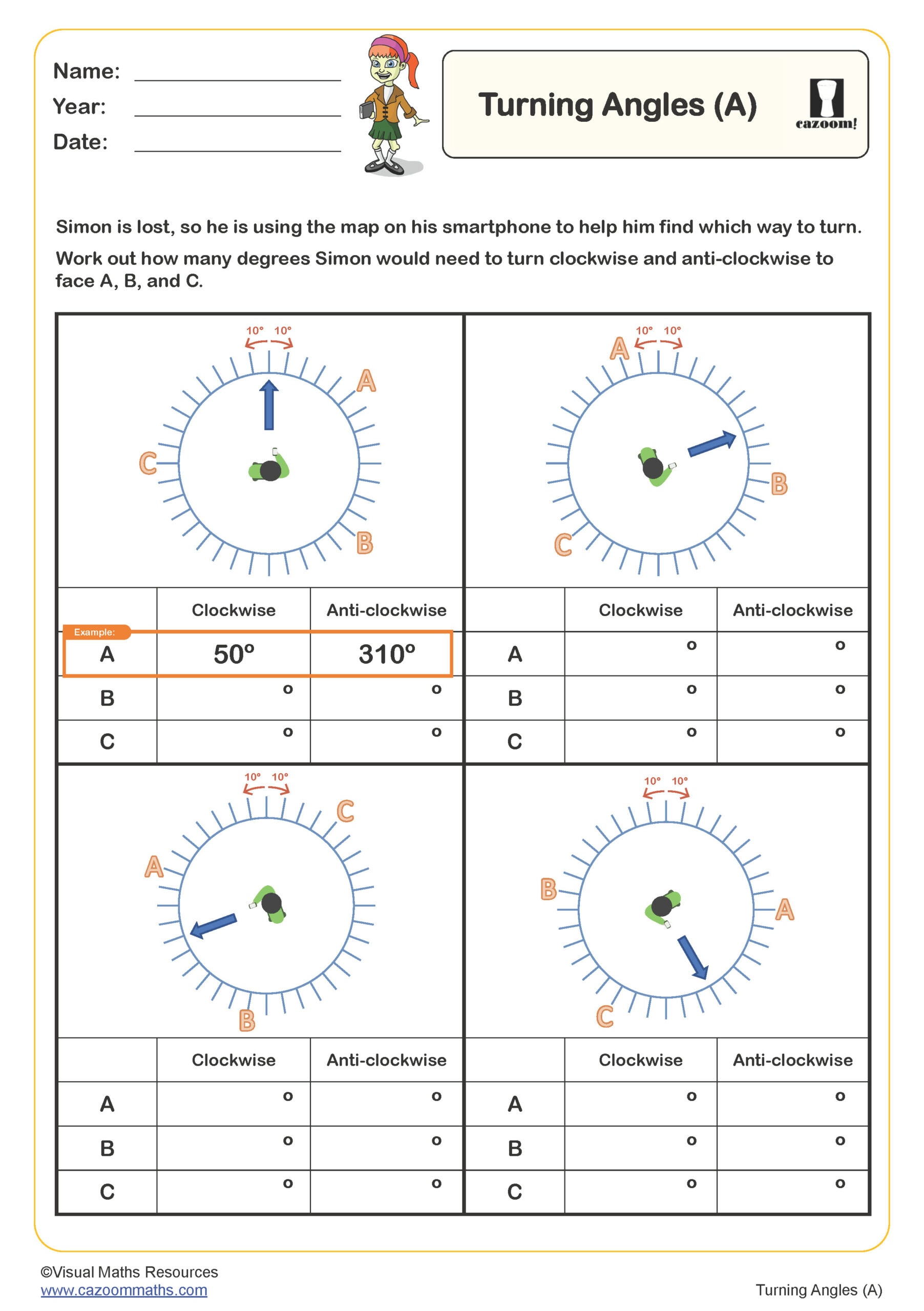
Turning Angles (B)

Year 5 Geometry Worksheets - Printable PDFs with Complete Answer Keys
Finding decent geometry materials that actually challenge Year 5 minds without overwhelming them isn't easy. Our ready-to-use, printable PDF worksheets tackle complex geometric concepts through carefully structured questions that build understanding progressively. Each worksheet includes detailed worked solutions showing mathematical reasoning, making them perfect for independent study, targeted intervention, or assessment preparation that builds genuine confidence.
Angles, Coordinates & Shape Properties - What's Covered in Year 5 Geometry?
Our Cazoom Maths UK curriculum experts have structured these worksheets to take students from consolidating previously learned geometry knowledge right through to tackling upper KS2 challenges. The progression from basic properties to complex problem-solving really develops the geometric thinking they'll need for secondary school. Students particularly enjoy the practical measurement tasks:
• Advanced Angle Work: Measuring and calculating angles in triangles, quadrilaterals, and polygons using protractors and geometric properties
• Coordinate Geometry: Plotting points, drawing shapes, and understanding translations and reflections on coordinate grids
• Properties of Shapes: Investigating regular and irregular polygons, understanding internal angles, and classifying quadrilaterals
• Area and Perimeter: Calculating areas of rectangles, triangles, and compound shapes using appropriate formulae
• 3D Shape Analysis: Identifying faces, edges, vertices, and understanding nets of common 3D shapes
• Geometric Reasoning: Using properties to solve problems, prove statements, and justify mathematical conclusions
Why Year 5 Geometry Worksheets Are Essential for KS2 Success
We've noticed that students who master geometric concepts at this stage show significantly improved mathematical reasoning across all areas. The spatial awareness and logical thinking developed through geometry work directly support algebra, data handling, and even advanced arithmetic. That's why consistent practice becomes so crucial for SATs preparation and secondary school readiness.
• Develops precise mathematical language and geometric vocabulary
• Strengthens problem-solving strategies and logical reasoning skills
• Builds confidence with measurement tools and geometric instruments
• Prepares students for upper KS2 assessment requirements
• Creates essential foundations for secondary school mathematics
Real-World Applications: Where Year 5 Geometry Skills Matter Most
From understanding map scales to analysing architectural designs, these skills prove surprisingly practical. It's actually quite rewarding when students begin spotting geometric principles in everything from smartphone screens to garden planning.
• Engineering and construction - blueprint reading, structural calculations, and design principles
• Digital technology - computer graphics, game development, and user interface design
• Navigation and mapping - understanding scale, coordinates, and directional relationships
• Art and design - perspective drawing, pattern creation, and spatial composition
• Sports analysis - field positioning, trajectory calculations, and strategic formations
• Home improvement - measuring spaces, calculating materials, and planning layouts